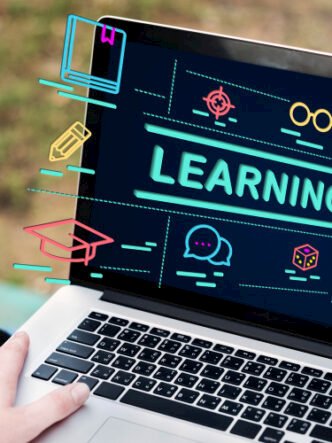Calculating return on investment is tricky.
Some business efforts provide clear indicators as to whether they are paying off.
Others require a more thorough investigation.
Take measuring the return on customer support development, for example. There are several widely accepted performance metrics you can use to determine how successful your initiatives are. If you hit those targets (and see the revenue flowing in), it’s easy to make the case to company stakeholders.
Now, consider knowledge sharing.
Despite being incredibly beneficial to any business, companies often struggle to calculate knowledge sharing‘s true ROI.
Communication is difficult to measure. Communication tools are not always used strictly as expected, which makes it hard to accurately predict usage and engagement behaviors.
Nevertheless, it seems plainly evident that improving communication also improves productivity and employee efficiency. The challenge is finding out how these elements interact with one another to impact big-picture financial outcomes.
The task is not impossible. It just requires gathering data that most company stakeholders aren’t aware they can access.

How to calculate knowledge sharing ROI
According to McKinsey, the average employee spends almost two hours a day searching for and collecting data. This is non-productive time that could be transformed into value-generating work – with the right communication framework in place.
The key to calculating the ROI of knowledge sharing initiative lies in capturing and analyzing behavioral data. The more comprehensive an image you can create of the way your users, employees, and vendors interact with your company’s knowledge sources, the better you will be able to optimize the delivery of knowledge to those individuals.
The technology that companies leverage to achieve this is already widely used in the field of Internet marketing. Behavioral analytics underscore everything from email marketing ROI to search engine rankings.
As users interact with data in a digital environment, they generate behavioral data. Their usage creates data points that can then be carefully analyzed for patterns, inconsistencies, and opportunities for optimization.
The same is true when it comes to managing internal compliance with knowledge sharing applications in an enterprise environment. Capturing the data that internal teams generate when interacting with knowledge-containing assets allows stakeholders to put a dollar value on every one of those assets.
Organizations can do this by looking carefully at the media their users, employees, and partners consume when looking for internal data.
The ROI of knowledge sharing infrastructure is equal to the amount of time it saves people searching for data.

Effective knowledge management requires data and digital asset management
The knowledge you are sharing with users, employees, and partners consists of assets. Many of these assets take the form of text documents, images, or videos. The better you can organize them, the greater their availability and overall value of your text, image, and video hosting solution is.
Data asset management (DAM) solutions help organizations treat content as a corporate asset with tangible value. Businesses that don’t have a standardized information delivery system end up running into obstacles when sharing knowledge. These obstacles get bigger and more complex as the company grows.
DAM solutions help to ensure data quality and governance policies are shared across the organization in an efficient, scalable way. Organizations that invest in knowledge sharing initiatives nurture employees to work smarter, faster, and more efficiently than their competitors.
Crucial for calculating the ROI of knowledge sharing, media-rich DAM solutions allow stakeholders to monitor user behavioral data in real-time. Every user interaction inside the DAM environment generates data that can then inform the process of calculating ROI.
For example, you may find that a specific training document is frequently downloaded but rarely opened. This signifies a disconnect between the knowledge employees think they need to do their jobs and the knowledge they actually need. You could use this data to improve compliance or to adjust your approach to internal training.

Why media format compatibility is important
Knowledge management solutions are most effective when they cover the entirety of an organization’s data infrastructure. This means that they must accommodate every data format that the company uses to deliver knowledge to users, employees, and partners.
As one of the most valuable media formats in today’s digital business environment, video compatibility is especially crucial. Organizations are increasingly relying on video for internal training, remote conferencing, and product tutorials.
For internal communication, video improves learning outcomes during training while offering reduced costs compared to live, in-person training sessions. It also empowers company spokespeople and influential executives to generate a more uniform company culture.
Any knowledge sharing solution that doesn’t include video compatibility is essentially incomplete. Even if your business is not extensively leveraging video right now, it will in the near future – the value that video offers is simply too great to ignore.
This means that if you deploy a knowledge management solution that supports digital assets today, but fails to accommodate video in the process, you may end up building an obstacle to scalable long-term growth (not to mention losing out on monetization opportunities). Underutilized video content will generate costs and inefficiencies that get reflected in your ROI calculations.

Why you need knowledge sharing now more than ever
Effective knowledge sharing infrastructure allows organizations to democratize access to data in a secure, scalable way. Choosing the right software for the job also enables stakeholders to easily calculate the value of knowledge sharing initiatives by analyzing user behaviors.
In today’s COVID-impacted economic climate, the ability to quickly and securely communicate knowledge is more important than ever. Your remote employees need up-to-date training materials, and your customers need to know that your operations and processes are taking their health and safety in mind.
All of these initiatives depend on clear communication. Both inside the company and out, the need to transfer knowledge from one individual to another remains constant. Organizations who succeed at doing this in a way that drives value while compensating for the unique challenges of today’s public health environment are well on their way to becoming tomorrow’s leaders.









